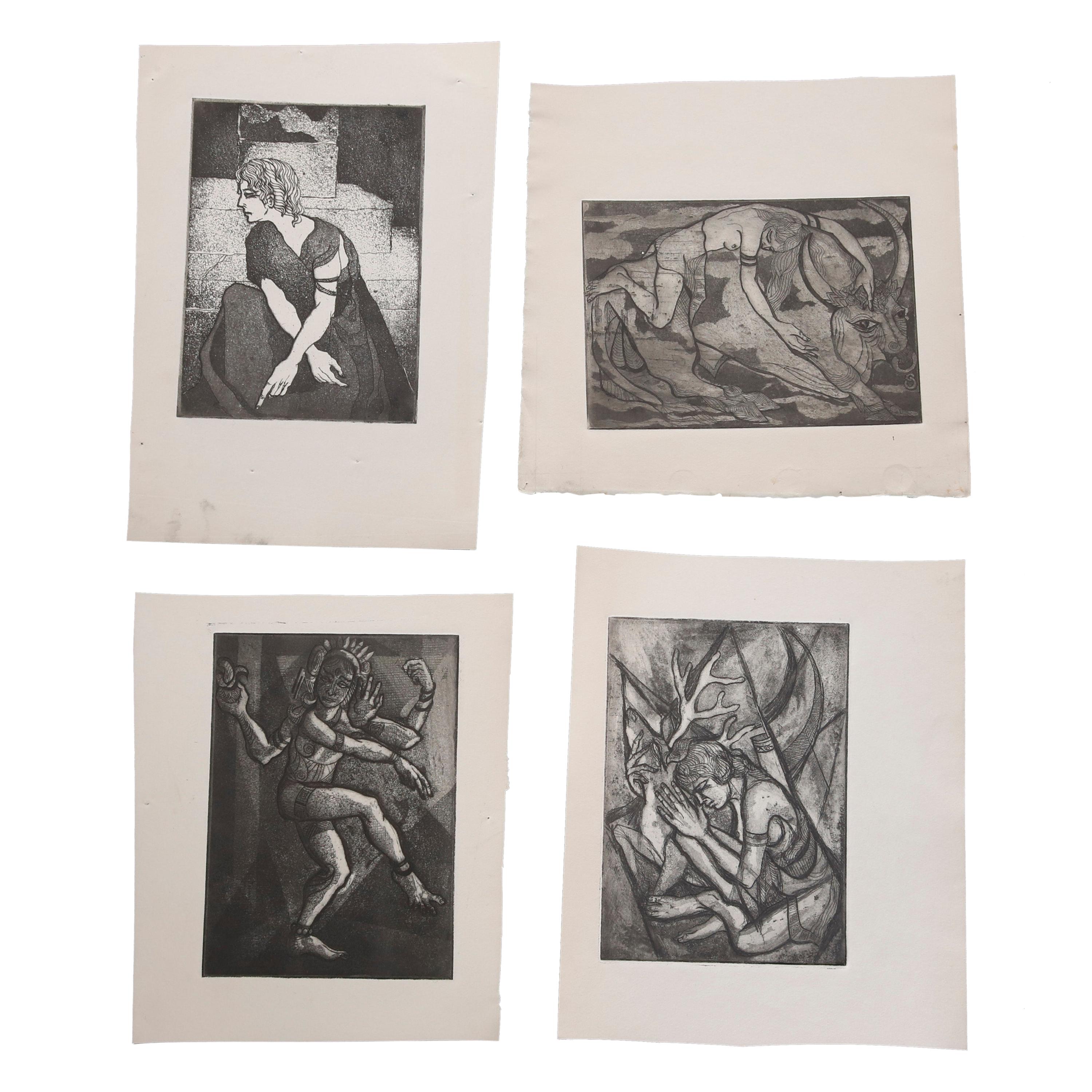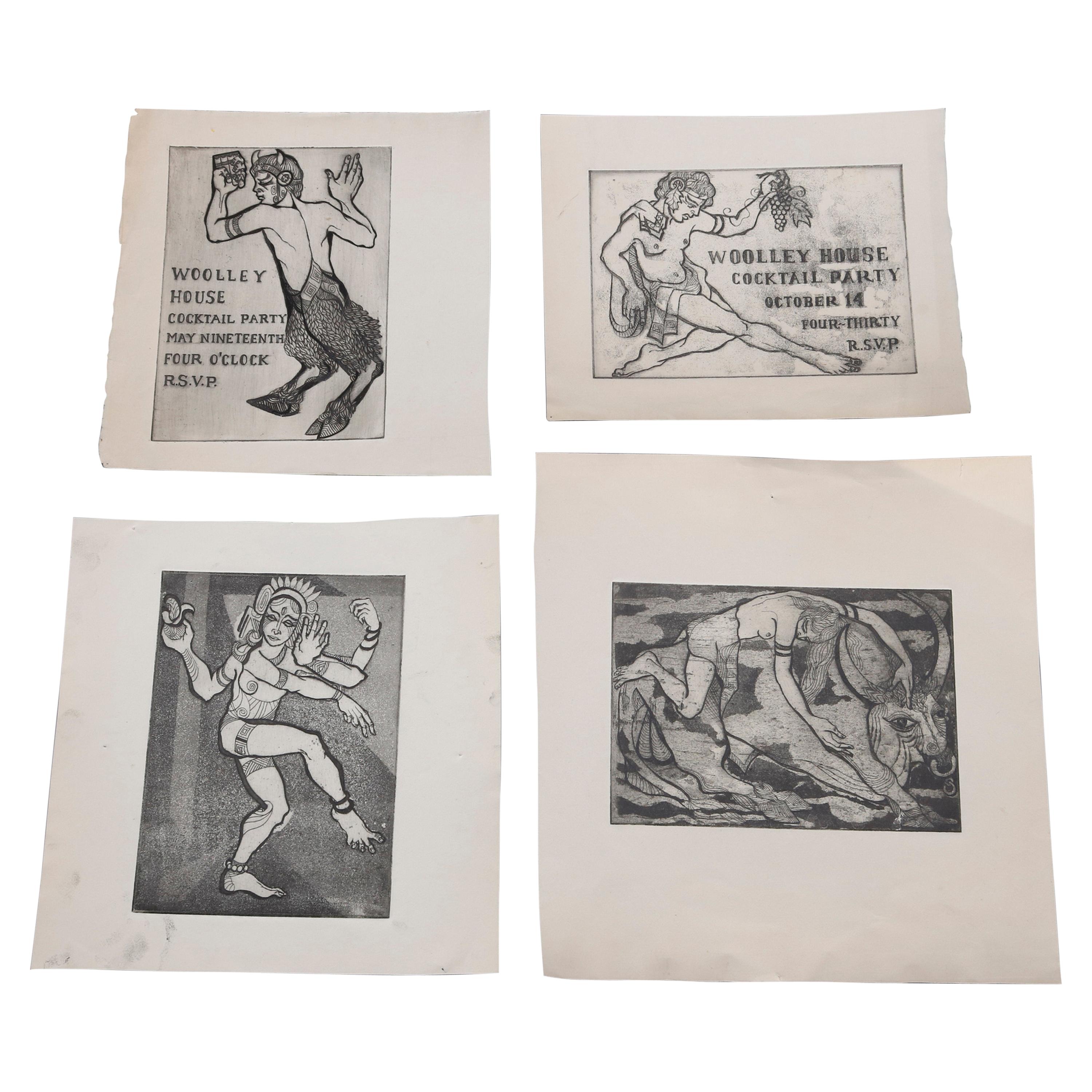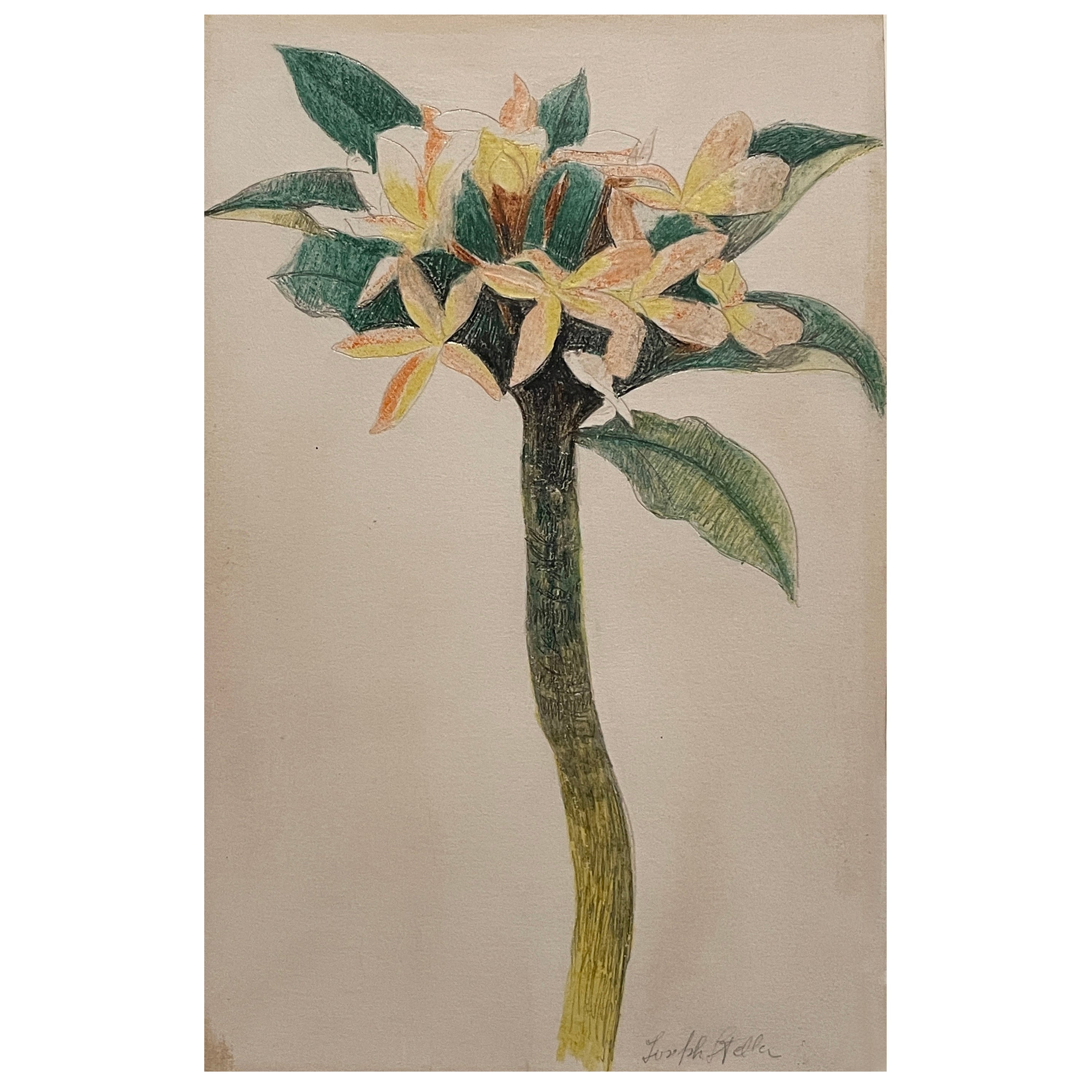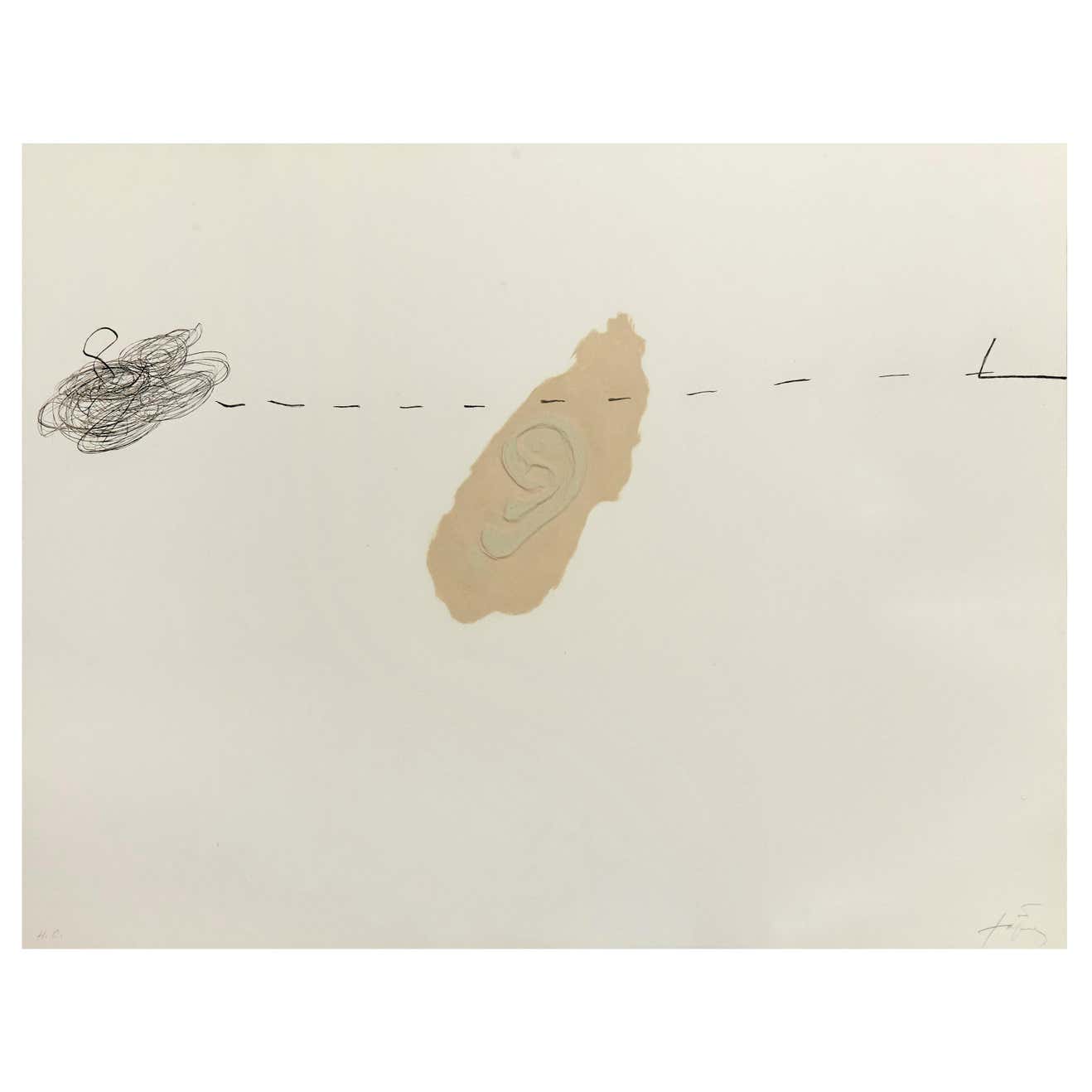Items Similar to James Joseph Kearns "Despondent Man" Etching
Want more images or videos?
Request additional images or videos from the seller
1 of 13
James Joseph Kearns "Despondent Man" Etching
About the Item
James Joseph Kearns (b. 1924) etching, signed at dated "1957." Depicts a man with hollow eyes and a despondent expression with a hand outstretched. Similar to many of his works, there is a malaise or hopelessness to the subjects that gives them almost an alien, inhuman aesthetic.
Framed, but does not include easel.
Artist Bio:
James Joseph Kearns 'James Kearns' (1924-): An outstanding modern American sculptor, painter and printmaker, James Kearns studied at the Art Institute of Chicago, DePaul University and at the University of Chicago from 1946-1951. Kearns's first one man exhibition took place in New York in 1956 and since that time his sculptures, paintings and etchings have been included in exhibitions at the National Institute of Arts and Letters, the Pennsylvania Academy of fine Arts and at the Whitney Museum in New York. In 2006, the Rider University Art Gallery, Lawrenceville, New Jersey held an exhibition that showcased a retrospective of Fifty-Plus Years of James Kearn's drawings and paintings. Museums that have purchased his art include the Museum of Modern Art, New York, and the Smithsonian Museum in Washington DC. The 'Fine Art Museum at the Western Carolina University' lists an impression of "Man on Stilts" in their collection. The 'Butler Institute of American Art Museum' also lists an impression of "Man on Stilts" in their collection, Accession No. 968-P-213. In 1960, Kearns became a professor at the School of Visual Arts, New York. He has also illustrated a number of important books, including, Can these Bones Live (1960) and The Heart of Beethoven (1962).
- Creator:James Joseph Kearns (Artist)
- Dimensions:Height: 13.75 in (34.93 cm)Width: 10.75 in (27.31 cm)Depth: 1 in (2.54 cm)
- Style:Modern (Of the Period)
- Materials and Techniques:Paper,Etched
- Place of Origin:
- Period:
- Date of Manufacture:1957
- Condition:
- Seller Location:Brooklyn, NY
- Reference Number:1stDibs: LU1444219109352
About the Seller
5.0
Platinum Seller
These expertly vetted sellers are 1stDibs' most experienced sellers and are rated highest by our customers.
Established in 2007
1stDibs seller since 2015
572 sales on 1stDibs
Typical response time: <1 hour
- ShippingRetrieving quote...Ships From: Brooklyn, NY
- Return PolicyA return for this item may be initiated within 2 days of delivery.
More From This SellerView All
- Parker Panttila "Macabre" Mixed-Media on BoardLocated in Brooklyn, NYParker Panttila (Brooklyn, New York 1924-2002) ink, pencil, chalk and oil on board. Surrealist in style, highlighting a macabre sensibility. Along wi...Category
Vintage 1950s American Drawings
MaterialsPaint
- Abstract Expressionist Mixed Media by Burt Hasen, 1961By Burt HasenLocated in Brooklyn, NYBurton Stanley Hasen (New York City, 1921 - 2007) abstract expressionist mixed media (watercolor and ink) on paper. A New York native, Hasen relocated to Paris to study art at the Ac...Category
Vintage 1960s American Drawings
MaterialsPaint
- 1970s James Mont Style Ebonized ArmoireBy James MontLocated in Brooklyn, NYThis majestic armoire in the style of James Mont features two sliding milk glass doors, a black lacquered frame, three adjustable shelves on the top, and one built-in shelf on the bo...Category
Vintage 1970s American Hollywood Regency Wardrobes and Armoires
MaterialsBrass
- Floor Candelabrum by Herbert Simonson for James MartinBy James MartinLocated in Brooklyn, NYThis masterful floor candelabrum was designed and manufactured by the Bucks Country, Pennsylvania woodworker, Herbert (Herb) Simonson, and retailed at James Martin's studio. Martin s...Category
Vintage 1960s American Mid-Century Modern Candelabras
MaterialsAluminum
- Vintage Figural "Man and Tree' Ceramic Charger by PollackLocated in Brooklyn, NYFigural charger by ceramicist, Pollack depicting a man gazing at a growing tree (USA, 1977). Attractive color combinations and interesting textural elements present. Measures: H: 1...Category
Vintage 1970s American Mid-Century Modern Ceramics
MaterialsCeramic
- Post-Modernist Polished Brass Geometric Vase by James Johnston for BalosBy James JohnstonLocated in Brooklyn, NYPostmodern geometric brass vases by James Johnston for Balos, which operated in both Hong Kong and Taiwan, ca. 1980. Unique, elegant objet d'art with a triangular opening for use as ...Category
Vintage 1980s Taiwanese Post-Modern Vases
MaterialsBrass
You May Also Like
- Collection of James Joseph Kearns Expressionist Lithographs with FiguresBy James Joseph KearnsLocated in Big Flats, NYA collection of 4 James Joseph Kearns Expressionist lithographs depict figures in various settings, circa 1954 Measures: 1: 11.5" H x 9.75" W, 2: 9.75" H x 9.75" W, 3: 10" H x 8.25...Category
20th Century American Expressionist Prints
MaterialsPaper
- Collection of James Joseph Kearns Expressionist Lithographs with FiguresBy James Joseph KearnsLocated in Big Flats, NYA collection of 4 James Joseph Kearns expressionist lithographs depict figures in various settings, circa 1954 Measures: 1: 8" H x 8.5" W, 2: 7.25" H x 9" W, 3: 9.25" H x 8.75" W, ...Category
20th Century American Expressionist Prints
MaterialsPaper
- James Jacques Joseph Tissot "Soirée d'été" 'Summer Evening' Etching & Dry PointBy James TissotLocated in Los Angeles, CAA fine French 19th century etching and drypoint Titled "Soirée d'été" (Summer Evening) by Jacques Joseph Tissot (French, 1836-1902) depicting Mrs. Kathleen Newton resting on a lounge chair. Signed and dated (l/l): J.J. Tissot, 1881 in the plate. Under the mat, the front of the sheet inscribed in pencil with a '1' in a circle, the verso of the sheet with old price inscription "450-" in pencil. Circa: 1881-1882. Measures: Plate Height: 9 inches (22.9 cm) Plate Width: 15 1/2 inches (39.4 cm) Sheet Height: 14 1/2 inches (36.8 cm) Sheet Width: 20 5/8 inches (52.4 cm) Frame Height: 19 inches (48.3 cm) Frame Width: 24 1/2 inches (62.2 cm) Frame Depth: 1 1/8 inches (2.9 cm) Literature: Wentworth 56. Note: Tissot's from 1881 is said to depict his lover, the Irish divorcee Mrs. Kathleen Newton, resting on a lounge chair. Provenance: Private collection, Los Angeles, California Jacques Joseph Tissot (French, 15 October 1836 – 8 August 1902), Anglicized as James Tissot, was a French painter and illustrator. He was a successful painter of Paris society before moving to London in 1871. He became famous as a genre painter of fashionably dressed women shown in various scenes of everyday life. He also painted scenes and characters from the Bible. Jacques Tissot was born in the city of Nantes in France and spent his early childhood there. His father, Marcel Théodore Tissot, was a successful drapery merchant. His mother, Marie Durand, assisted her husband in the family business and designed hats. A devout Catholic, Tissot's mother instilled pious devotion in the future artist from a very young age. Tissot's youth spent in Nantes likely contributed to his frequent depiction of shipping vessels and boats in his later works. The involvement of his parents in the fashion industry is believed to have been an influence on his painting style, as he depicted women's clothing in fine detail. By the time Tissot was 17, he knew he wanted to pursue painting as a career. His father opposed this, preferring his son to follow a business profession, but the young Tissot gained his mother's support for his chosen vocation. Around this time, he began using the given name of James. By 1854 he was commonly known as James Tissot; he may have adopted it because of his increasing interest in everything English. In 1856 or 1857, Tissot travelled to Paris to pursue an education in art. While staying with a friend of his mother, painter Elie Delaunay, Tissot enrolled at the Ecole des Beaux-Arts to study in the studios of Hippolyte Flandrin and Louis Lamothe. Both were successful Lyonnaise painters who moved to Paris to study under Jean-Auguste-Dominique Ingres. Lamothe provided the majority of Tissot's studio education, and the young artist studied on his own by copying works at the Louvre, as did most other artists of the time in their early years. Around this time, Tissot also made the acquaintance of the American James McNeill Whistler, and French painters Edgar Degas (who had also been a student of Lamothe and a friend of Delaunay), and Édouard Manet. In 1859, Tissot exhibited in the Paris Salon for the first time. He showed five paintings of scenes from the Middle Ages, many depicting scenes from Goethe's Faust. These works show the influence in his work of the Belgian painter Henri Leys (Jan August Hendrik Leys), whom Tissot had met in Antwerp earlier that same year. Other influences include the works of the German painters Peter Von Cornelius and Moritz Retzsch. After Tissot had first exhibited at the Salon and before he had been awarded a medal, the French government paid 5,000 francs for his depiction of The Meeting of Faust and Marguerite in 1860, with the painting being exhibited at the Salon the following year, together with a portrait and other paintings. Émile Péreire supplied Tissot's painting Walk in the Snow for the 1862 international exhibition in London; the next year three paintings by Tissot were displayed at the London gallery of Ernest Gambart. In about 1863, Tissot suddenly shifted his focus from the medieval style to the depiction of modern life through portraits. During this period, Tissot gained high critical acclaim, and quickly became a success as an artist. Like contemporaries such as Alfred Stevens and Claude Monet, Tissot also explored Japonisme, including Japanese objects and costumes in his pictures and expressing style influence. Degas painted a portrait of Tissot from these years (Metropolitan Museum of Art, New York), in which he is sitting below a Japanese screen hanging on the wall. Still on Top, 1873 Tissot fought in the Franco-Prussian War as part of the improvised defense of Paris, joining two companies of the Garde Nationale and later as part of the Paris Commune. His 1870 painting La Partie Carrée (The Foursome) evoked the period of the French revolution. Either because of the radical political associations related to the Paris Commune (which he was believed to have joined mostly to protect his own belongings rather than for shared ideology), or because of better opportunities, he left Paris for London in 1871. During this period, Seymour Haden helped him to learn etching techniques. Having already worked as a caricaturist for Thomas Gibson Bowles, the owner of the magazine Vanity Fair, as well as exhibited at the Royal Academy, Tissot arrived with established social and artistic connections in London. Tissot used...Category
Antique Late 19th Century French Victorian Drawings
MaterialsGlass, Wood, Paper
- Mid-Century Modern Framed Etching Rouge Pad Signed James Rosenquist 62/78 1970sBy James RosenquistLocated in Keego Harbor, MIFor your consideration is a magnificent, abstract etching, "Rouge Pad," signed in pencil and numbered 62/78 by James Rosenquist, 1978. Frame is in good vintage condition, art is in e...Category
Vintage 1970s Mid-Century Modern Drawings
MaterialsPaper
- "Flower Study" by Joseph Stella AmericanBy Joseph StellaLocated in Norwood, NJJoseph Stella "Flower Study". Crayon and pencil on paper. Signed lower left. Image 6 7/8” x 4 /34”. Framed 12 1/2” x 10”. Gallery label Beadleston Gallery N.Y. N.Y.Category
Early 20th Century American Paintings
MaterialsPaper, Crayon
- Antoni Tàpies Etching, Orella, 1971By Antoni TàpiesLocated in Barcelona, BarcelonaOrella etching made by Antoni Tapies in Barcelona in 1971 Edition 75 Measures: 60 x 78 cm. In good original condition. Numbered and hand signed, edition of 75 We have sever...Category
Vintage 1970s Spanish Modern Prints
MaterialsPaper
Recently Viewed
View AllMore Ways To Browse
Vintage Furniture Washington Dc
Man Wall Sculpture
American Impression Furniture
Wall Easel
James Butler
Beethoven Art
Painters Easel
James Brown 1951
Gallery Easels
Vintage Stilts
Polidoro Da Caravaggio
Davis F Schwartz
Paul Jouve Peinture
Patti Cadby
Anton Pieck
Vintage Sunflower Sunset
Tiffany Fargo
Tiffany Tennis Ball Can





